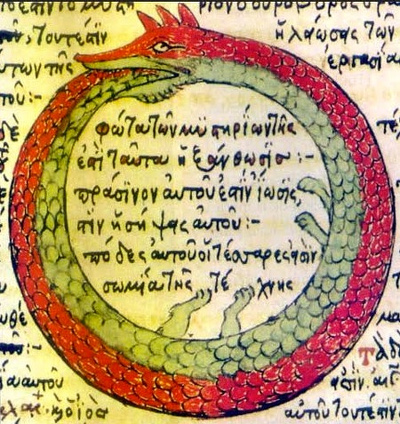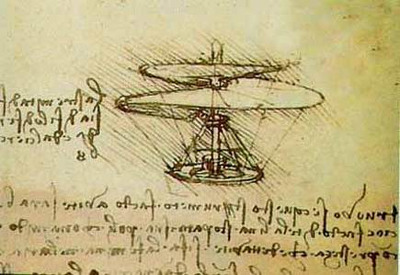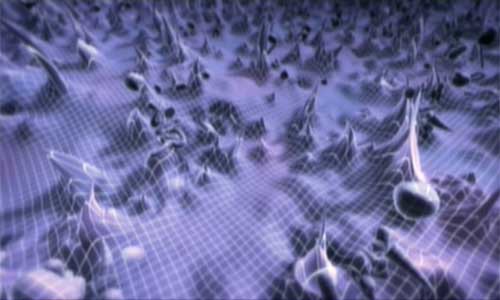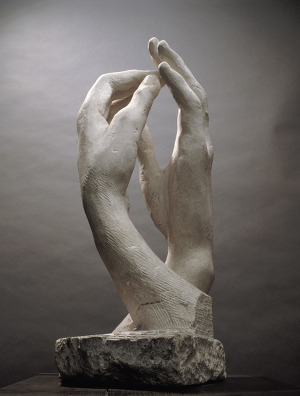The logical contradictions of the Universe
Is Erwin Schrödinger’s wave function – which did in the atomic and subatomic world an operation altogether similar to the one performed by Newton in the macroscopic world – an objective reality or just a subjective knowledge? Physicists, philosophers and epistemologist have debated at length on this matter. In 1960, theoretical physicist Eugene Wigner has proposed that the observer’s consciousness is the dividing line that triggers the collapse of the wave function[1], and this theory was later taken up and developed in recent years. “The rules of quantum mechanics are correct but there is only one system which may be treated with quantum mechanics, namely the entire material world. There exist external observers which cannot be treated within quantum mechanics, namely human (and perhaps animal) minds, which perform measurements on the brain causing wave function collapse” [2].

The English mathematical physicist and philosopher of science Roger Penrose developed the hypothesis called Orch-OR (Orchestrated objective reduction) according to which consciousness originates from processes within neurons, rather than from the connections between neurons (the conventional view). The mechanism is believed to be a quantum physical process called objective reduction which is orchestrated by the molecular structures of the microtubules of brain cells (which constitute the cytoskeleton of the cells themselves). Together with the physician Stuart Hameroff, Penrose has suggested a direct relationship between the quantum vibrations of microtubules and the formation of consciousness[3]. Penrose wrote: “The evolution of conscious life on this planet is due to appropriate mutations having taken place at various times. These, presumably, are quantum events, so they would exist only in linearly superposed form until they finally led to the evolution of a conscious being—whose very existence depends on all the right mutations having ‘actually’ taken place! [4]”
Physics and mathematics have presented us essentially three distinct worlds: that of the microscopic particles, the visible one we live on this earth and the world of the great cosmological intergalactic distances. For each of these worlds, scientists have studied and worked out formulas that describe the fundamental laws. Yet, despite the efforts, a unifying law, which expresses its validity from quantum physics to cosmology, has not yet been found and tested.
So, a new need appears on the horizon: the need to push the boundaries beyond the limitations imposed by current scientific research mode, using an approach that takes into account other human disciplines that – with insights and specific knowledge – complement the models presented by physics and envisage many different levels of reality. In other words, it is felt the need of a transdisciplinary research that is able to internally integrate the “researcher” (the man), revealing the necessary connections.
This problem has led to the recognition that there are different ways of knowledge, that their different modes are complementary and that they belong to different levels of reality. The concept of “levels of reality” was introduced as the first fundamental axiom of transdisciplinarity by theoretical physicist Basarab Nicolescu, President and founder of the International Centre for Transdisciplinary Studies and Research (CIRET). Nicolescu writes: “There are, in Nature and in our knowledge of Nature, different levels of Reality and, correspondingly, different levels of perception. […] The structure of the totality of levels of Reality or perception is a complex structure: every level is what it is because all the levels exist at the same time[5]”.
In the present case, we can easily detect the three levels:
- The macro-physical level;
- The micro-physical level;
- The cosmological level.
According to common scientific approach, the physical laws that describe all levels are valid only within the same level, and not in others. Yet the three levels exist simultaneously and those that appear to be contradictions in one of the levels are no longer in the other two.
The complexity of reality can not be described only by the mathematical language. The mathematical language is exclusively geared to the analytical mind, while the symbolic language to the whole person, with his thoughts, feelings and body. In quantum mechanics the particle is what it is only because all the other particles are there: the complexity is an essential feature of the world.
The transition from one level of reality to another is ensured by the included middle logic. With this term, the Romanian philosopher Stephane Lupasco[6] shows how the classical Aristotelian logic of the “tertium non datur” has to be critically reviewed in the light of a transdisciplinary view, especially after the quantum physics discoveries. According to Werner Heisenberg: “In quantum theory this law `tertium non datur’ is to be modified.[…] the principle is assumed in common language and that we have to speak at least about our eventual modification of logic in the natural language. […] In quantum theory, however, we have to admit that there are other possibilities which are in a strange way mixtures of the two former possibilities[7]“.
Heisenberg was the first to see the epistemological, ontological and methodological consequences of quantum physics, highlighting the two different aspects of reality that were outlined by the two concepts of “objective” and “subjective“. He argued, however, that it would be a serious mistake to divide the world into a subjective reality and objective reality, in a real “world” and a “spiritual” world. Quantum physics has shown us that we need to rethink the theories of classical science, as the total separation between the subject and the object, the idea that the material world is the only “real” world and the idea that science can develop independently of other sources of knowledge such as theology, philosophy, arts and culture.
The coexistence of the quantum world and the physical macro world has led to the disruption of what had previously been considered mutually exclusive pairs of contradictions (A and non-A): wave and particle, continuity and discontinuity, separability and inseparability, local causality and global causality, symmetry and breaking of symmetry, reversibility and irreversibility of time, etc.
The intellectual “scandal” provoked by quantum mechanics is that the generated contradictory pairs are actually antagonistic only when they are analysed through the interpretative filter of the classical logic.
An example of what has been asserted is the psychological phenomenon that Carl Gustav Jung called synchronicity: a link between two events which, although not connected to each other in a causal manner, occur simultaneously[8]. Although the physics of that time was built on the rigid axiom of cause and effect, Jung and the physicist Wolfgang Pauli observed that any presumption of a causal link between the synchronous events was absurd and inconceivable. A-causality, a principle that seems to have no reason to exist to our level of macrocosm, is one of the basic principles of entanglement in the quantum reality. C. G. Jung and W. Pauli would have never been able to outline and describe the phenomenon of synchronicity if each of them had not dared to transcend the limits of their disciplines, physics (Pauli) and psychoanalysis (Jung).
Notes:
[1] E. Wigner, H. Margenau (1967-12). “Remarks on the Mind Body Question, in Symmetries and Reflections, Scientific Essays“. American Journal of Physics 35
[2] Z. Schreiber, The Nine Lives of Schrödinger’s Cat, Imperial College of Science, Department of Physics, London 1994
[3] R. Penrose, S. Hameroff, “Consciousness in the universe: A review of the ‘Orch OR’ theory” Physics of Life Reviews (Elsevier) -2014
[4] R. Penrose, The Emperor’s New Mind, Penguin Books, 1989, p. 295.
[5] B. Nicolescu, Transdisciplinarity, past, present and future – Published in Moving Worldviews – Reshapingsciences, policies and practices for endogenous sustainable development, COMPAS Editions, Holland, 2006, p. 142-166.
[6] S. Lupasco,”The principle of antagonism and the logic of energy”, Hermann & co ed., 1951
[7] W. Heisenberg – Fisica e filosofia – Milano, Il Saggiatore 2008, p. 212-213
[8] F. Marzocca – Incontro tra Jung e Pauli: l’esperienza psicologica della sincronicità verso l’entanglement quantistico – Roma, Edizioni Mythos – 2011




Thought-provoking as always, Fabio. I wonder if the language of poetry – which pays close attention to structure while also reaching inward to the experience of the poet/speaker/reader as well as reaching outward toward the cosmological – might be a language intentionally striving to bridge the layers of our experience of existence.
I believe you are right, Matt. We are using the wrong “language” to approach Nature. Nature is not made by numbers, but by analog connections between matter. And poetry triggers those connections.
Pingback: The logical contradictions of the Universe | Alessio Treglia